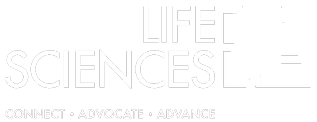Report reveals a sobering gap in employee readiness to handle and take on the shift toward consumer-driven health plans
Original article from http://ebn.benefitnews.com
By Tristan Lejeune
As more and more employers look at defined contribution health care and other insurance shifts, will employees be ready? Last year, J.D. Power and Associates reported that 47% of employers “definitely” or “probably” will switch to a defined contribution health plan in the coming years.
The third annual Aflac WorkForces Report reveals a sobering gap in employee readiness to handle and take on the shift toward consumer-driven health plans and defined contribution health. A majority of workers (54%) would prefer not to have more control over their insurance options, citing a lack of time and information to manage it effectively, while 72% have never even heard the phrase “consumer-driven health care.”
Aflac and Research Now surveyed 1,884 benefits leaders and 5,229 wage-earners and found arresting disconnects in their expectations, plans and views of the future. For example, 62% of employees think their medical costs will increase, but only 23% are saving money for those hikes. A full three-quarters of the workforce think their employer will educate them about changes to their health care coverage as a result of reform, but only 13% of employers say educating their employees about health care reform is important to their organization.
“It may be referred to as ‘consumer-driven health care,’ but in actuality, consumers aren’t the ones driving these changes, so it’s no surprise that many feel unprepared,” says Audrey Boone Tillman, executive vice president of corporate services at Aflac. “The bottom line is if consumers aren’t educated about the full scope of their options, they risk making costly mistakes without a financial backup plan.”
Aflac reports what many benefits leaders instinctively know: Consumers already find health insurance decisions intimidating and don’t welcome increased responsibility. Fifty-three percent fear they might mismanage their coverage, leaving their families less protected than they are now. And significant ignorance remains: Plan participants are “not very” or “not at all” knowledgeable about flex spending accounts (25%), health savings accounts (32%), health reimbursement accounts (49%), or federal or state health care exchanges (76%).
According to the report, 53% of employers have introduced a high-deductible health plan over the past three years, and that trend shows no sign of slowing. Yet more than half of workers have done nothing to prepare for changes from HDHPs, the Affordable Care Act or other system shifts.
“It’s time for consumers to face reality,” Tillman says. “Ready or not, they are being put in control of their health insurance decisions – and that means having to make choices that could have a big impact on personal finances. If employers aren’t offering guidance to workers on how to make crucial benefits decisions, the responsibility lies in the hands of consumers to educate themselves.”
The U.S. government estimates that by 2014, household out-of-pocket health care expenses will reach an annual average of $3,301. More than half (55%) of workers have done nothing to prepare for possible changes to the health care system, Aflac reports, and their savings reflect that: 46% have less than $1,000 put aside for unexpected, serious illness or injury. Twenty-five percent have less than $500.
Tillman says that what surprised her most about the data is how people seem to be ignoring such a large, tectonic shift in the landscape. It’s not exactly like health care reform has been subtle and creeping.
“There’s no greater awareness, no greater education, and it’s a sea of change that’s taking place,” Tillman says. “It’s all over the news; it’s everywhere. But people aren’t any more moved to action and education.”
What happens with health care, she says, “seems to be evolving,” and there may be a reluctance on the part of consumers to jump in because “hey, it may change.” The shift to CDHPs, however, seems to be building in momentum, and employees would do well to wake up. The entire point of that shift, after all, is that they will be on their own, but employers do need to make sure they know that.
Benefits “are a great expense to your organization, and to have your workers and the people that you’re charged with protecting not aware, not informed of how the benefits offering could impact their lives, to me that’s not really safeguarding a very expensive and important benefit,” Tillman says. “It benefits the employee, obviously, to know: What are my benefits, what is my employer thinking about doing, what do I need to be studying. But at the same time, it’s very important to employers … because otherwise they’re not getting a very good return on their investment.”
Tillman says “frequent communication is paramount” for instituting changes like this – don’t send out the message once a year and then forget about it. And never underestimate the value of a personal example as a teaching method.
“A lot of times employers and HR get into a communicate-only-at-open-enrollment mode,” she says. “And, even if health care reform weren’t about to happen, I’d still say as an HR professional, communicate throughout the year. Communicate via every method that you can – to be sure, at open enrollment, but also on your intranet. If you’ve got a portal, including things in mailers, the paper tables in the cafeteria. … the more we can highlight a benefit by showing how other employees have utilized it, that’s a really impactful case.”




